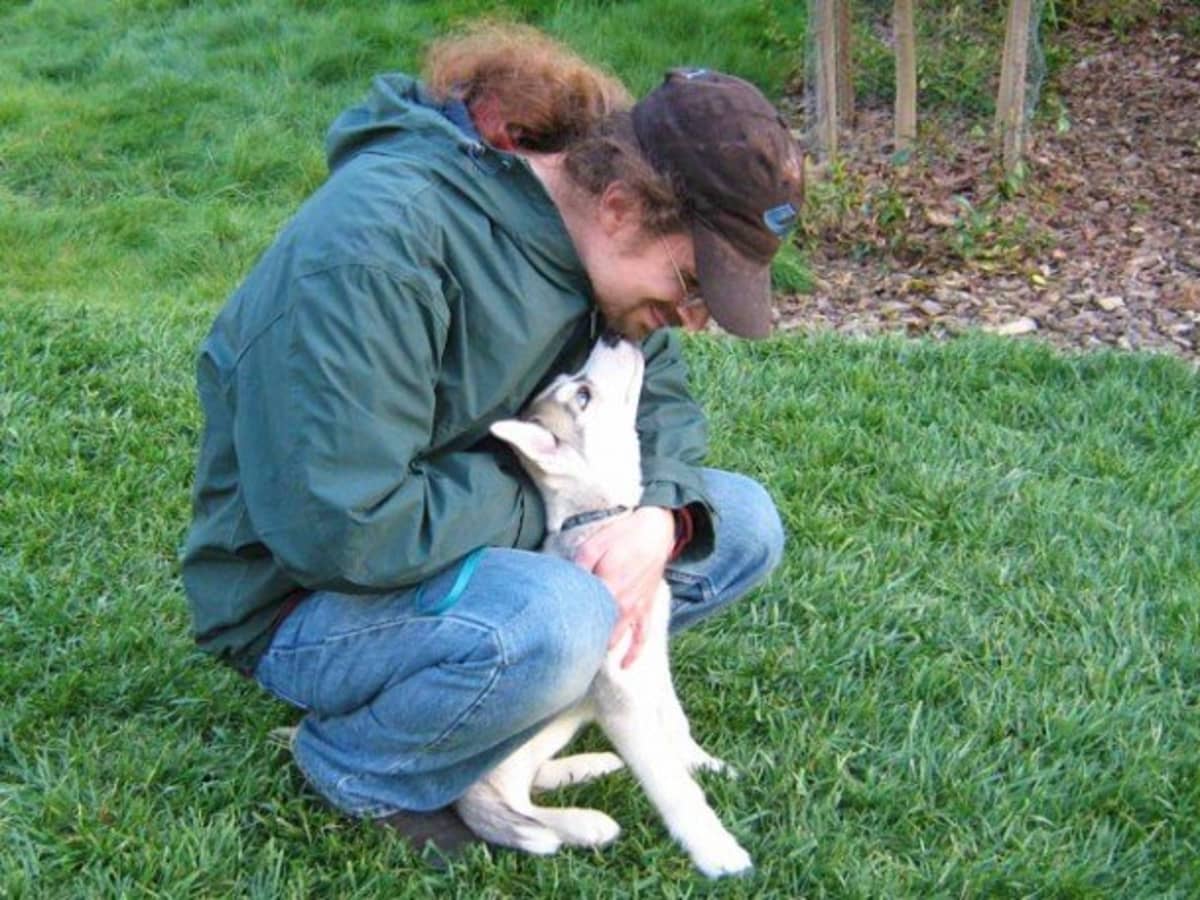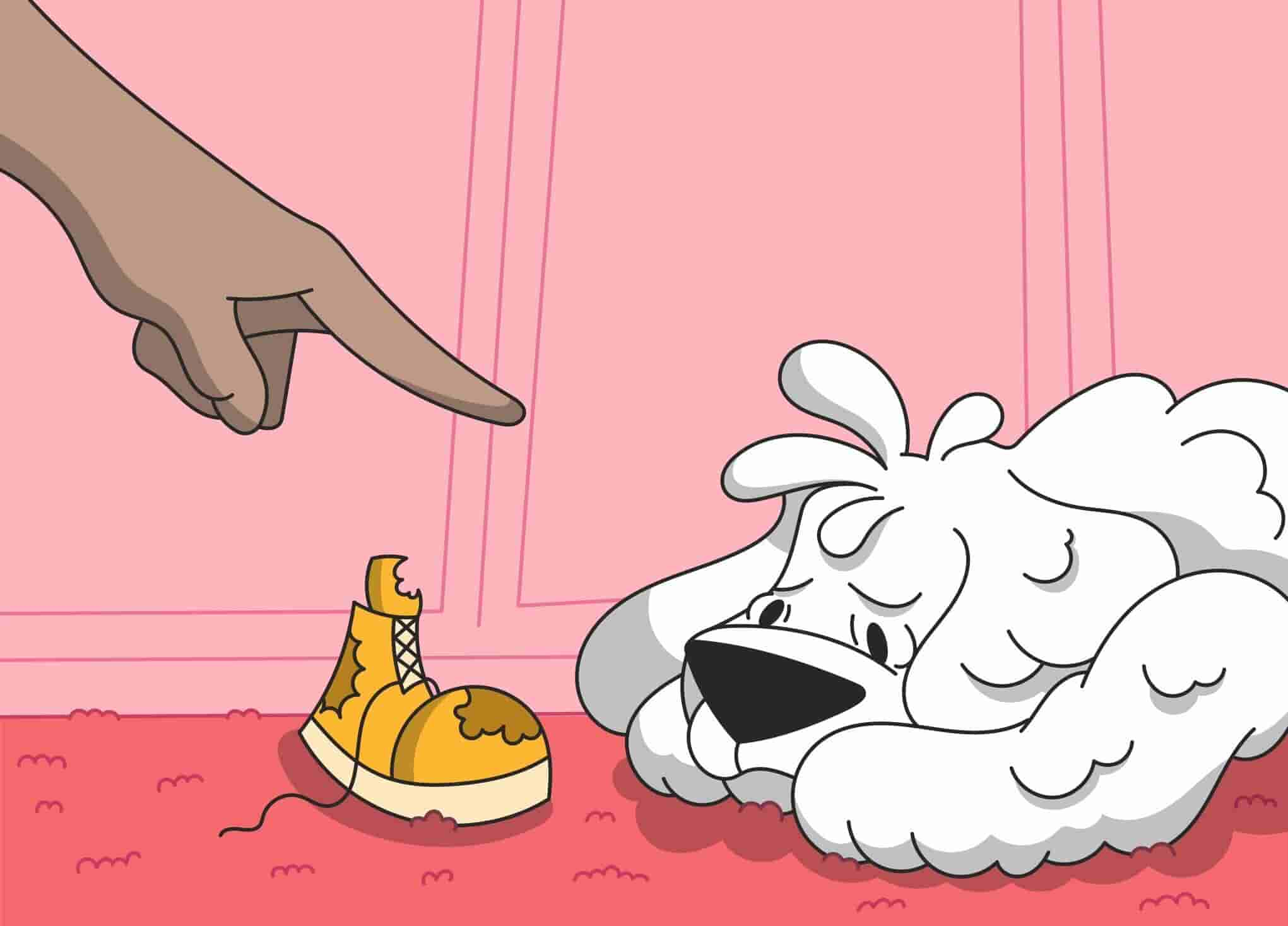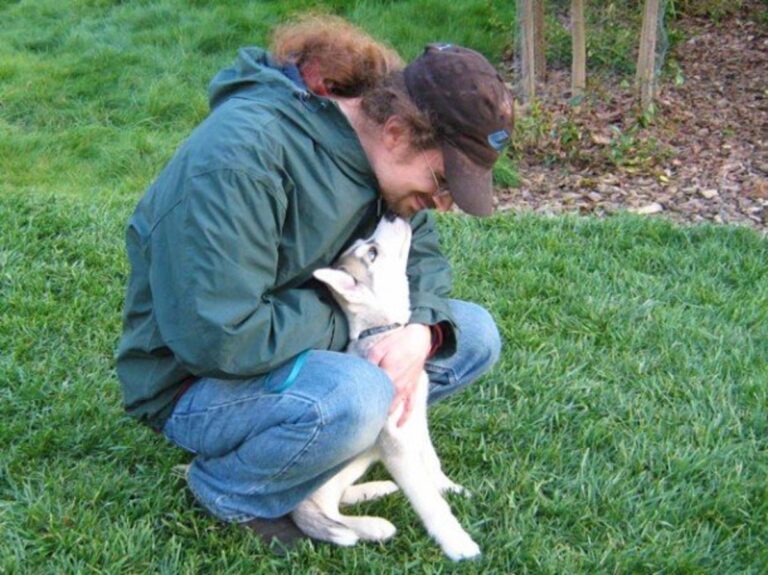To let a dog know they did something wrong, stop them in the act and provide them with a pet parent-approved alternative. For example, if you catch your dog chewing on your shoes, say “No!”
Firmly and remove the item from their mouth. Then, offer them an appropriate chew toy. This approach helps redirect their behavior and teaches them what is acceptable.

Credit: pethelpful.com
Techniques For Letting A Dog Know They Did Something Wrong
Disciplining a dog can be a delicate task. It is important to teach them right from wrong in a way that is effective, yet humane. By following these techniques, you can let your dog know when they have done something wrong and correct their behavior.
1. Be Consistent
Consistency is key when it comes to teaching your dog right from wrong. Establish clear rules and boundaries and make sure everyone in the household follows them. Dogs thrive on routine and structure, so consistency will help them understand what is expected of them.
2. Be Prompt With Discipline
Timing is crucial when it comes to disciplining your dog. They need to associate the negative consequence with their behavior, so you must deliver the discipline as soon as possible after the action. This will help them make the connection between their actions and the consequences.
3. Be Firm
When letting your dog know they did something wrong, it is important to be firm in your tone and body language. Dogs respond best to assertive yet calm communication. Use a stern voice and maintain a confident posture to convey your disapproval.
4. Using The Word ‘no’
The word ‘No’ is a powerful tool in letting your dog know they did something wrong. It should be used consistently and in a clear, authoritative tone. However, it is important to note that overusing the word can diminish its impact. Reserve it for serious offenses or dangerous behaviors.
5. Positive Reinforcement
While it may seem contradictory, positive reinforcement can also be used to let your dog know they did something wrong. After correcting their behavior, immediately redirect them to a desired action and reward them for following it. This will reinforce the idea that good behavior is rewarded.
6. Timeout/isolation
In some cases, a timeout or isolation can be an effective way to let your dog know they did something wrong. If they have engaged in destructive or aggressive behavior, removing them from the situation and placing them in a quiet and safe space can help them calm down and reflect on their actions.
Implementing these techniques will help effectively communicate to your dog when they have done something wrong. Remember to be consistent, prompt with discipline, firm, and use positive reinforcement. With patience and reinforcement, your dog will learn to understand and respond to your signals of disapproval, ultimately improving their behavior.:max_bytes(150000):strip_icc()/discipline-strategies-for-teens-1094840_color1-5bd1e23ac9e77c00511f591d.png)
Credit: www.verywellfamily.com
Understanding A Dog’s Guilty Behavior
To let a dog know they did something wrong, it is important to catch them in the act and redirect their behavior. Quickly say “No!” And replace the undesirable item with an approved alternative. Avoid scaring the dog too much with punishment and focus on positive reinforcement.
Guilty Looks And Their Significance
Have you ever come home to find your favorite pair of shoes chewed up, only to be greeted by your dog with a guilty look? Those puppy-dog eyes and tucked tail are not just a coincidence. Guilty looks signify your pet’s fear, concern, or anxiety in response to a potential confrontation. It’s their own way of saying “I messed up, I’m sorry!” But does this behavior mean that dogs are truly aware of their misbehavior?
Dogs’ Awareness Of Their Misbehavior
Research suggests that dogs with a guilty look do not show evidence that they are aware of having engaged in misbehavior. One would not experience guilt if one were unaware that a crime had been committed. This means that the guilty look dogs give us is more likely a response to our reaction rather than a reflection of their understanding of right and wrong.
However, this doesn’t mean that we should ignore their guilty behavior completely. Dogs are highly attuned to our emotions and body language, so they can pick up on our displeasure even without fully comprehending the reason behind it. By responding appropriately to their guilty behavior, we can effectively communicate to our pets that they have done something wrong.
Dogs’ Awareness Of Their Misbehavior
When your dog displays a guilty look, it’s important to address the behavior immediately and provide them with an alternative or redirection. For example, if you catch your dog chewing on your shoes, say “No!” in a firm voice and take the item away. Then, offer them an appropriate chew toy as a replacement. This way, you are teaching your dog what is acceptable behavior and what is not, without relying solely on their understanding of guilt.
Remember that consistency and positive reinforcement are key in shaping your dog’s behavior. By consistently redirecting their attention to appropriate activities and rewarding good behavior, you can help them learn what is expected of them and avoid any potential feelings of guilt or anxiety.
So, next time you see your dog giving you those guilty eyes, take it as an opportunity to reinforce the right behavior and strengthen the bond between you and your furry friend.
Effective Ways To Correct A Dog’s Behavior
To let a dog know they did something wrong, it’s important to catch them in the act and provide a clear and immediate correction. Use a firm “No!” And redirect their behavior towards an appropriate alternative. This helps them understand what is acceptable and helps correct their behavior effectively.
Catching The Dog In The Act
When it comes to correcting a dog’s behavior, timing is crucial. It’s important to catch your dog in the act of misbehaving so that they can associate the correction with their behavior. For example, if you see your dog chewing on your shoes, immediately say “No!” in a firm voice and take the shoes away from them. This will help them understand that chewing on your shoes is not acceptable.
Using Punishments That Don’t Frighten The Dog
Punishments should never be used to frighten or physically harm the dog. It’s important to use gentle and positive methods to correct their behavior. For instance, if your dog jumps on the furniture, gently guide them off and redirect their attention to their bed or a designated area. This teaches them where they should be and reinforces positive behavior.
Reinforcing Positive Behaviors
Positive reinforcement is a powerful tool in shaping a dog’s behavior. When your dog does something right, such as sitting on command or going to their designated potty area, provide immediate praise and rewards. This will help them understand that good behavior results in positive outcomes, encouraging them to repeat the behavior.
Ignoring Or Withdrawing Attention As A Punishment
Ignoring or withdrawing attention can be an effective way to correct certain behaviors in dogs. For example, if your dog is jumping on you for attention, turn your back and avoid eye contact. This sends the message that jumping will not get them the attention they desire. Once they calm down and have all four paws on the ground, reward them with attention and praise.
Timeouts As A Disciplinary Measure
Timeouts can be an effective disciplinary measure for dogs. If your dog refuses to listen to commands or continues engaging in undesirable behavior, calmly and assertively guide them to a designated timeout area, such as a crate or a separate room. Leave them alone for a short period, typically a few minutes, then let them out and resume positive interaction. This helps them understand that misbehavior has consequences.

Credit: petcube.com
Frequently Asked Questions Of How To Let A Dog Know They Did Something Wrong
How Do You Tell A Dog They’ve Done Something Wrong?
To tell a dog they’ve done something wrong, stop them in the act and offer a pet parent-approved alternative. For example, if they chew your shoes, say “No!” And remove the item. Once calm, provide them with a chew toy.
It’s important to catch and correct the behavior in the moment without frightening the dog.
Do Dogs Understand When They’ve Done Something Wrong?
Dogs do not understand when they’ve done something wrong. Guilty looks indicate fear or anxiety, not awareness of misbehavior. To correct a dog, catch them in the act and provide an alternative, approved option. Avoid harsh punishment and focus on positive reinforcement.
How Do You Show A Dog That What They Did Was Bad?
To show a dog that what they did was bad, catch them in the act and correct them immediately, without frightening them too much. Replace the unwanted behavior by offering a pet parent-approved alternative and giving them positive reinforcement when they make the right choice.
How Long Should You Punish A Dog For Doing Something Wrong?
Punish a dog immediately and with consistency by saying “No!” And redirecting their behavior. Avoid physical punishment and opt for positive reinforcement, offering them an alternative option. It is important to catch them in the act, without frightening them.
Conclusion
It is crucial to let your dog know when they have done something wrong to ensure their understanding of appropriate behavior. Stop them in the act, firmly say “No”, and redirect their attention to a more suitable activity or provide them with an approved chew toy.
Catching them in the act allows for immediate correction and helps them associate the behavior with negative consequences. Replacing punishment with positive reinforcement is more effective in teaching your dog right from wrong. Remember, patience and consistency are key in training your furry friend.



